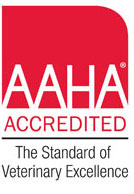Educational Articles
-
Ketoconazole is an antifungal given by mouth in the form of a tablet, used off label to treat fungal infections in dogs, cats, small mammals, and reptiles. The most common side effects are vomiting, diarrhea, lack of appetite, and weight loss. Do not use in pets that are allergic to it and use extreme caution when using in cats or pregnant pets.
-
Ketoconazole otic is an antifungal used in the treatment of external ear infections (otitis externa) caused by yeast in cats, dogs, and other animals. Ketoconazole otic comes in ointment or liquid drop suspension forms that may be specially compounded and/or combined into a formulation with other medications.
-
Ketoconazole topical is an antifungal used in the treatment of skin infections caused by fungal organisms in cats, dogs, and other animals. It comes in a variety of forms that may be specially compounded and/or be combined with other medications.
-
Ketoprofen is given by mouth in the form of a capsule or tablet to treat pain and inflammation in dogs and horses. It’s use in animals is off label. Do not use this medication in pets that are allergic to it, or in pets concurrently using corticosteroids or other NSAIDs. If a negative reaction occurs, call your veterinary office.
-
Ketorolac is applied topically to the eye to treat pain and inflammation of the eye. Its use in dogs and cats is off label. Do not use this medication in pets that are allergic to it. If a negative reaction occurs, call your veterinary office.
-
Play is important. All kittens need the opportunity to play with toys as well as social play. While learning about their environment, kittens can damage valuable objects, including furniture and curtains. Toys and treats can be hidden inside empty boxes and kiddie tunnels to satisfy a kitten’s need to explore. Supervise kittens carefully to prevent damage and to keep them safe.
-
The lacrimal duct is part of the nasolacrimal system, a series of narrow tubes that allow tears to drain from the eye into the nose and mouth. This duct can sometimes become blocked or fail to develop properly, resulting in tears overflowing and potentially staining the face below the eye. The clinical signs, diagnosis, and treatment options for the condition are explained in this handout.
-
The lacrimal duct is part of the nasolacrimal system, a series of narrow tubes that allow tears to drain from the eye into the nose and mouth. This duct can sometimes become blocked or fail to develop properly, resulting in tears overflowing and potentially staining the face below the eye. The clinical signs, diagnosis, and treatment options for the condition are explained in this handout.
-
Lactulose is used off label and is given by mouth to treat high blood ammonia levels and constipation in dogs, cats, birds, and reptiles. The most common side effects are diarrhea, bloating, gas, and abdominal cramping. Do not use in pets that are allergic to it or in pets with intestinal blockage/obstruction.
-
Lameness is an inability to properly use one or more limbs due to pain or weakness. The most common causes of sudden lameness in dogs are soft tissue injury (strain or sprain), injury to a joint, bone fracture, or dislocation. Your veterinarian will determine the best course of action based on your pet's condition, a detailed examination, and the results of diagnostic tests. Definitive diagnosis of the cause can be difficult. In some cases, a trial with anti-inflammatory medications and rest may be necessary.

